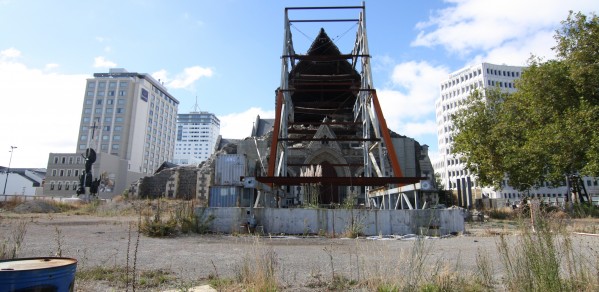
Kristen MacAskill, PhD student at the Centre for Sustainable Development, recently convened and chaired an international seminar to explore the major challenges posed by disaster risk in terms of both preparedness and post-disaster recovery.
Managing disaster risk has become a major element of international development policy, recognising the significant threat that natural (and human-induced) hazards pose to humanity. Earlier this year the Sendai Framework for Disaster Risk Reduction became the first major agreement of the United Nations' post-2015 development agenda. The framework’s priorities for action are directed towards understanding disaster risk, strengthening disaster risk governance, investment for risk reduction and enhancing disaster preparedness in order to support more effective responses to disaster.
This framework has since been followed by the agreement of the Sustainable Development Goals in New York in September. The third and final major agreement of the year is currently being negotiated in Paris, where international government representatives are negotiating a legally binding commitment to carbon reductions at COP21.
In light of this international agenda, the Centre for Sustainable Development at the Department of Engineering – supported by the Cambridge Forum for Sustainability and the Environment – hosted a seminar on disaster risk reduction. Participants from academia and industry included leading specialists in finance, risk, conflict, engineering, social sciences and disaster risk management.
A guest panel presented three perspectives on the subject.
Roger Sutton (former Chief Executive of the Canterbury Earthquake Recovery Authority in New Zealand) started proceedings with an emphasis on the need for effective leadership and transparent governance in post-disaster recovery. Sutton highlighted the challenges of shifting responsibilities from city-level to central-government authority. A fundamental difficulty is in creating a completely open, cooperative environment that minimises inefficiencies. Also, Sutton views recovery as a process that requires working with communities by involving them in the decision-making process. However, in practice this is limited because sharing information and involving the community in a time of uncertainty can be considered politically risky.
Rowan Douglas (CEO of Capital, Science & Policy Practice at Willis Group) described New Zealand as a leading example of a country that is prepared for disaster. A contributing factor was that a relatively high level of insurance cover helped to bear the brunt of the financial impact from the 2010/2011 earthquakes in Christchurch. Douglas then explained how the insurance industry could play a more significant role in addressing the global challenge of managing financial exposure to risk. He described the institution of insurance as being “all about trying to help society understand risk [and to] develop tolerable rules of behaviour so that actually we can live within tolerable parameters.” This requires a sustainable reserve of funds to deal with extremes alongside providing capital for resilient investments. He later referenced how risk management mechanisms are already emerging such as the African Risk Capacity, a treaty-based organisation that forms a mutual insurance arrangement.
Ana Gonzalez Palaez (fellow of the Cambridge Institute for Sustainability & Leadership) segued the discussion towards the issue of human rights in managing disaster risk. This begins with understanding that natural hazards do not always result in disasters. A disaster is when disruption occurs which exceeds the ability of an affected community (social or ecological) to cope using its own resources. The disaster itself is a function of community vulnerability and exposure. Hazard exposure can be reduced through mitigation and adaptation activities. Gonzalez Palaez described how advances in science and engineering have created better knowledge of disaster risk and more effective means to address it. This contributes towards an “emerging duty of care” for authorities to protect people and their assets from the hazards that we know exist. A failure of governments and other actors to take action becomes a failure to fulfil human rights to life, livelihood and shelter.
The ensuing open discussion with the audience explored the panel’s propositions and raised new angles. A key point of discussion was over the role of the engineering profession in disaster risk management. The topic of building codes provided an example of the difficulty of marrying technical issues with community involvement in decision making. On the one hand building codes are a technical concern of engineers. On the other, setting acceptable standards should be a matter of public discussion. However, this does not relieve the engineering profession of the need to communicate the implications of the possible choices and the trade-offs that such choices these entail.
Professor Peter Guthrie, Director of the Centre for Sustainable Development, provided a final reflection for the evening, highlighting that third-party intervention (be it through insurance or recovery assistance) should not compromise the ability of impacted communities themselves to respond independently. He also called for engineers to take more responsibility for the implications of their actions. Engineering is not just about coming forward with calculations; there needs to be greater involvement of engineers in broader societal debates.
Author: Kristen MacAskill, is a PhD student at the Centre for Sustainable Development. Her research investigates the perceived opportunities to implement change in infrastructure systems following a disaster and the extent to which such opportunities are realised.

